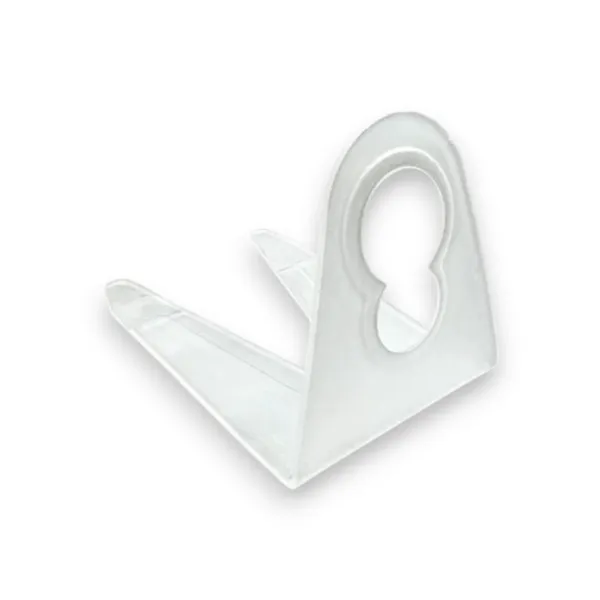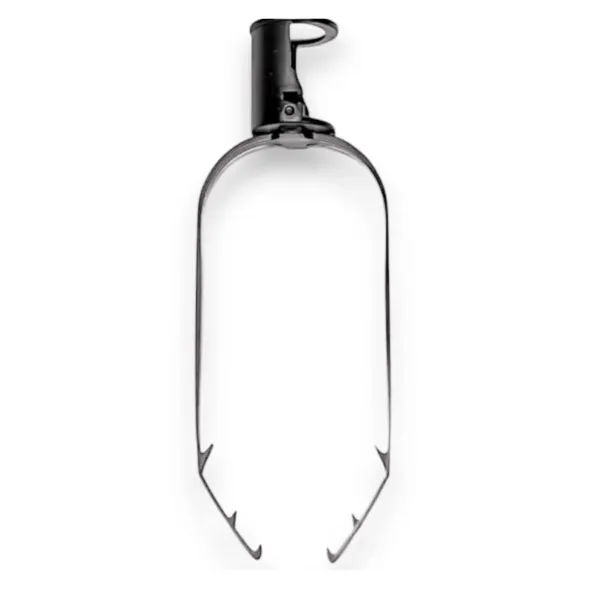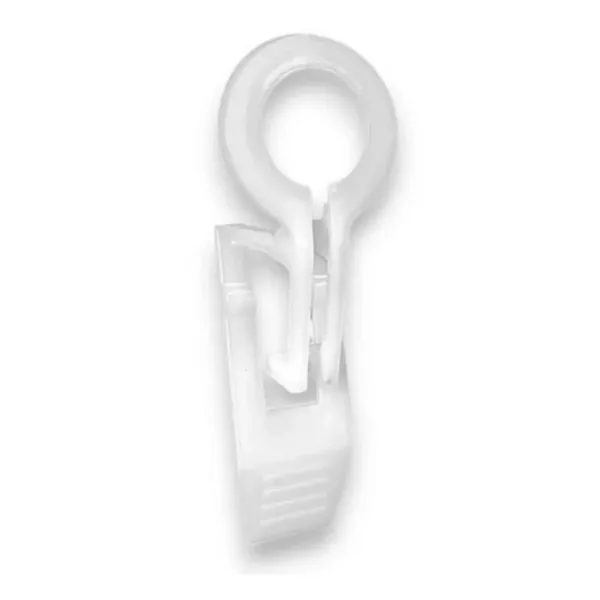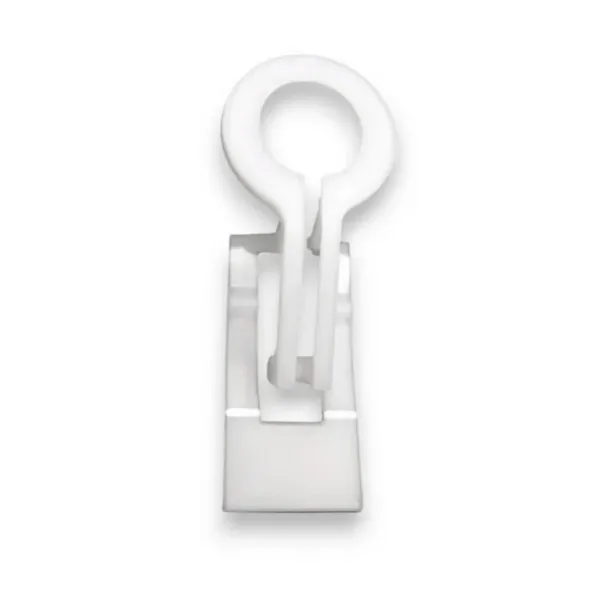Wholesale Pricing Presale Christmas Lights Clips
Pre-Season Wholesale C9 Best Clips
As Low As $0.14 per Clip
Elevate your Christmas light installations with the C9 Best Clip, the industry’s top choice for professional holiday decorators. Designed by a professional installer specifically for other installers, this nearly unbreakable clip is crafted to withstand the rigors of outdoor use season after season. Whether you're working on gutters, drip edges, or even shingles, the C9 Best Clip is the versatile, durable solution that makes your job easier and keeps costs down over the years.
Key Features:
Heavy-Duty Construction: Built from nearly unbreakable materials, the C9 Best Clip is designed to endure harsh weather conditions, ensuring reliable performance year after year.
Installer-Approved Design: Created by a professional Christmas light installer, this clip is engineered to meet the demands of the job, making installations faster and more efficient.
Versatile Use: The C9 Best Clip is perfect for securing lights along gutters, drip edges, and, in some cases, shingles, providing flexibility for a wide range of installation scenarios.
Cost-Effective: Reusable and durable, the C9 Best Clip is a cost-effective choice for professional installers, reducing the need for frequent replacements and lowering overall installation costs.
Recommended by Professionals: Trusted and recommended by expert Christmas light installers, the C9 Best Clip is the go-to solution for securing C9 bulbs and other holiday lighting elements.
Pre-Season Wholesale Best Shingle Tab Clips
As Low As $0.12 per Clip
Upgrade your Christmas light installations with the Durable Shingle Tab, designed to outlast and outperform standard shingle tabs. Made from highly durable plastic, this shingle tab provides a longer-lasting, more secure hold for both C7 and C9 sockets, ensuring your holiday lights stay perfectly in place. Whether you're installing lights on shingles, gutters, or decks, this versatile tab is the perfect Christmas light accessory.
Key Features:
Very Durable Plastic: Constructed from premium, long-lasting plastic, this shingle tab is built to endure harsh weather conditions, providing years of reliable use—far exceeding the lifespan of standard shingle tabs.
Superior Socket Hold: Specifically designed to hold C7 and C9 sockets more securely than regular shingle tabs, ensuring your lights remain in place throughout the holiday season.
Easy Installation: The tab's design allows it to slide easily under shingles, making installation quicker and less frustrating than with other shingle tabs.
Versatile Use: Perfect for use on shingles, gutters, and decks. Simply wedge the legs within available spaces to secure the tab, or use it in conjunction with a parapet clip on flat surfaces for added stability.
Compatible with Parapet Clip: For flat surfaces, pair this shingle tab with a parapet clip to achieve a secure, professional-grade installation. It’s the perfect accessory for any Christmas light display.
Pre-Season Wholesale C9/C7 Best Enclosed Ridge Clips 500/Case
As Low As $0.40 per Clip
The Best Enclosed Ridge Clip is designed for professional holiday lighting installations, offering unbeatable security, durability, and versatility. Made from high-quality, durable plastic, this clip features an enclosed design that ensures it will never detach from the light strand, providing confidence that your lights will stay firmly in place. Its extended length accommodates any ridge shingle without causing damage, making it perfect for worry-free installations. Plus, it’s compatible with both C9 and C7 bulbs, adding even more flexibility to your setup.
Key Features:
Durable Plastic Construction: Crafted from robust, high-grade plastic, these clips are built to endure tough weather conditions, ensuring long-lasting use season after season.
Enclosed Design: The unique enclosed structure securely locks onto the light strand, preventing the clip from slipping or detaching, even in windy or adverse weather.
Extended Length for Versatility: The longer design ensures a secure fit on any ridge shingle without causing damage, offering compatibility with various roof types.
Works with C9 and C7 Bulbs: Specifically designed to hold both C9 and C7 light strands, providing versatility and ease of use for different bulb sizes.
Easy Installation: Simplifies setup with quick, hassle-free application, saving time while delivering a clean, professional look.
Pre-Season Wholesale C9 Tuff Wedge Clip 800/Case
As Low As $0.16 per Clip
The Tuff Wedge Clip is the go-to choice for professional installers who need a fast and reliable way to secure C9 bulbs on holiday displays. Designed with convenience in mind, this versatile clip easily flexes over pre-installed bulbs, making it ideal for quick installations on socket wire lines. The Tuff Wedge Clip ensures a secure and polished look for your light displays, helping you create visually stunning installations with minimal effort.
Key Features:
Flexes Over Pre-Installed Bulbs: The Tuff Wedge Clip features a unique flexible design that allows it to snap directly over C9 bulbs already mounted on socket wire lines. This saves time and eliminates the need for removing or adjusting bulbs, making the installation process faster and more efficient.
Sturdy, Weather-Resistant Construction: Built from high-quality, UV-stabilized plastic, the Tuff Wedge Clip is engineered to resist harsh outdoor conditions, such as wind, rain, and snow. Its durable design prevents cracking and wear, ensuring long-lasting performance for both residential and commercial applications.
Ideal for Multiple Surfaces: Whether you’re working with shingles, gutters, or drip edges, the Tuff Wedge Clip provides a firm and secure grip on various surfaces, keeping lights in place without sagging or shifting.
Streamlined Installation: With the ability to clip directly over pre-installed bulbs, the Tuff Wedge Clip reduces installation time and simplifies the process, allowing for rapid and professional-looking displays that stand out during the holiday season.
Clean and Professional Finish: The Tuff Wedge Clip ensures that your C9 bulbs are perfectly aligned, giving your holiday light displays a clean, polished, and symmetrical appearance that will impress clients and onlookers alike.
Pre-Season Wholesale C9 Tuff Flex Clip 800/Case
As Low As $0.16 per Clip
The Tuff Flex Clip is the perfect solution for professional installers seeking a versatile and efficient way to secure C9 bulbs on their holiday displays. Specifically designed to work with pre-installed bulbs on socket wire lines, this innovative clip offers both convenience and flexibility, making installations smoother and faster. The Tuff Flex Clip provides a strong and secure hold while allowing for easy adjustments, ensuring that your lights remain perfectly aligned throughout the season.
Key Features:
Flexes Over Pre-Installed Bulbs: The Tuff Flex Clip’s unique design allows it to clip directly over C9 bulbs already installed on socket wire lines. This feature makes it ideal for installers looking to streamline the installation process and reduce setup time without compromising quality.
Strong and Durable Construction: Made from high-quality, weather-resistant materials, the Tuff Flex Clip is built to withstand extreme outdoor conditions, including wind, rain, and snow, ensuring that your light displays stay securely in place all season long.
Secure and Professional Hold: The Tuff Flex Clip’s sturdy grip ensures that bulbs remain firmly attached, even on challenging surfaces like gutters, shingles, and drip edges. Its reliable hold prevents shifting or sagging, giving your holiday display a clean and professional appearance.
Ease of Use and Versatility: With the ability to clip over pre-installed bulbs, the Tuff Flex Clip offers unmatched convenience. Installers can quickly secure lights without removing or adjusting bulbs, making it an ideal choice for both residential and commercial installations.
Frequently Asked Questions
What surfaces are the clips compatible with?
Our clips are versatile and can be used on gutters, shingles, drip edges, and even flat surfaces when paired with parapet clips, making them suitable for various installations.
Are the clips durable for outdoor use?
Yes, all our clips are made from heavy-duty, weather-resistant plastic, ensuring they withstand harsh outdoor conditions like wind, rain, and snow.
What bulb types are the clips compatible with?
Most of our clips, including C9 Best Clips and Shingle Tab Clips, are compatible with both C7 and C9 bulbs, offering flexibility for different lighting setups.
How do Tuff Wedge and Tuff Flex Clips simplify installation?
These clips are designed to flex over pre-installed bulbs, allowing you to quickly and securely attach lights without removing or adjusting bulbs, saving time and effort.
What quantities and colors are the clips available in?
Our clips are available in quantities ranging from 500 to 2000 per case and come in colors like white, brown, and black, giving you options to suit your project needs.
Discover Expert Tips on Our Blog

$1 MILLION Installing Christmas Lights (His Commercial Secrets Revealed)
Understanding the Commercial Christmas Lights Market
The commercial Christmas lights industry represents a significant opportunity for installers looking to scale their businesses beyond residential work. While many installers focus exclusively on homeowners, the commercial sector offers larger contracts, more predictable revenue streams, and the potential for multi-year agreements that can transform a seasonal side hustle into a thriving year-round enterprise.
Commercial work encompasses everything from small HOA entrance displays to massive shopping center installations. The key difference isn't just the scale—it's the professional approach required to succeed in this space. Property management companies, municipalities, and corporate clients expect a level of professionalism, documentation, and reliability that goes beyond what residential customers typically demand.
The Journey from Residential to Commercial
Many successful commercial installers start with residential work, building their skills, equipment inventory, and business systems before transitioning into larger projects. This progression allows you to develop the operational foundation necessary for handling complex commercial installations while generating cash flow from smaller jobs.
The transition often begins with a single commercial opportunity—perhaps a $20,000 contract spread over several years. While this might seem modest compared to some residential neighborhoods, the key advantage lies in the projected revenue and professional relationships you build. A six-year contract at $20,000 annually represents $120,000 in guaranteed revenue, provided you maintain the quality and service levels expected.
Essential Requirements for Commercial Work
Insurance and Documentation
Before approaching any commercial client, you need proper insurance coverage and documentation. Most property management companies require:
General liability insurance (typically $1-3 million)
Commercial auto insurance
Workers' compensation coverage
A current Certificate of Insurance (COI)
W-9 form with your EIN (Employer Identification Number)
Some larger clients may require excess liability policies or higher coverage limits. It's crucial to understand these requirements before bidding, as inadequate insurance will immediately disqualify you from consideration.
Business Systems and Professionalism
Commercial clients expect professional business operations. This means:
Using a Customer Relationship Management (CRM) system
Providing detailed proposals and contracts
Maintaining accurate financial records
Having clear terms and conditions
Offering professional invoicing and payment processing
Without these systems in place, you'll struggle to compete with established commercial installers who can demonstrate their professionalism through every interaction.
Finding and Securing Commercial Clients
Building Relationships with Property Managers
Property management companies control numerous commercial properties and can become valuable long-term partners. To connect with them:
Research local property management companies
Call and ask about their vendor requirements
Request information about becoming an approved vendor
Understand their credentialing process (which can take 45+ days)
Follow up consistently and professionally
Property managers want reliable vendors who make their jobs easier. They're managing multiple properties with various maintenance needs, and Christmas lights are just one component. Position yourself as a solution provider who can handle everything related to holiday lighting without creating additional work for them.
Understanding RFPs and Municipal Contracts
Municipalities and large corporations often use Request for Proposals (RFPs) to select Christmas lighting vendors. Learning to navigate this process opens doors to substantial contracts. Key points include:
Monitor city and county websites for RFP announcements
Understand the specific requirements and submission deadlines
Provide detailed responses addressing every requirement
Include proof of insurance, references, and portfolio examples
Be prepared for longer decision-making timelines
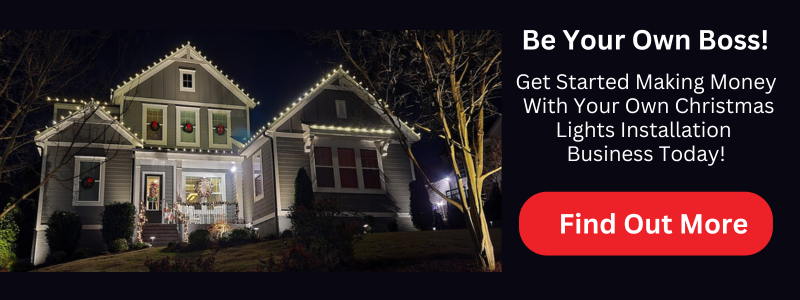
Pricing and Profitability in Commercial Work
Understanding Profit Per Man Hour
One crucial metric for commercial work is profit per man hour—not just gross revenue. A $5,000 HOA entrance that takes one crew half a day to install may be more profitable than a $20,000 installation requiring a week of labor. Calculate your true profitability by considering:
Material costs
Labor expenses (including payroll taxes)
Equipment depreciation
Travel time and vehicle costs
Administrative overhead
Commercial work often provides better profit margins per man hour than residential, but only when properly priced and efficiently executed.
Avoiding Common Pricing Mistakes
Many installers underbid commercial work, either from inexperience or desperation to land contracts. This leads to:
Inadequate profit margins
Inability to scale operations
Poor service quality due to resource constraints
Eventual business failure
Review your pricing annually and ensure it reflects your true costs plus a healthy profit margin. Remember that commercial clients often value reliability and quality over the lowest price.
Managing Commercial Projects Successfully
Equipment and Inventory Considerations
Commercial installations require different equipment than residential work. Consider investing in:
Commercial-grade LED lighting
Heavy-duty extension cords and power distribution
Specialized installation equipment (lifts, tall ladders)
Storage solutions for off-season inventory
Custom elements like tower trees or oversized displays
Plan your equipment purchases strategically, as unutilized assets drain profitability. However, having the right tools enables you to take on lucrative projects that competitors can't handle.
Communication and Service Standards
Commercial clients expect prompt, professional communication. This includes:
Responding to maintenance calls within 24 hours
Providing regular project updates
Documenting all work with photos
Addressing concerns immediately
Maintaining consistent quality standards
Remember that many people see commercial displays—every burned-out bulb reflects on your company's reputation. Build maintenance into your pricing and service model.
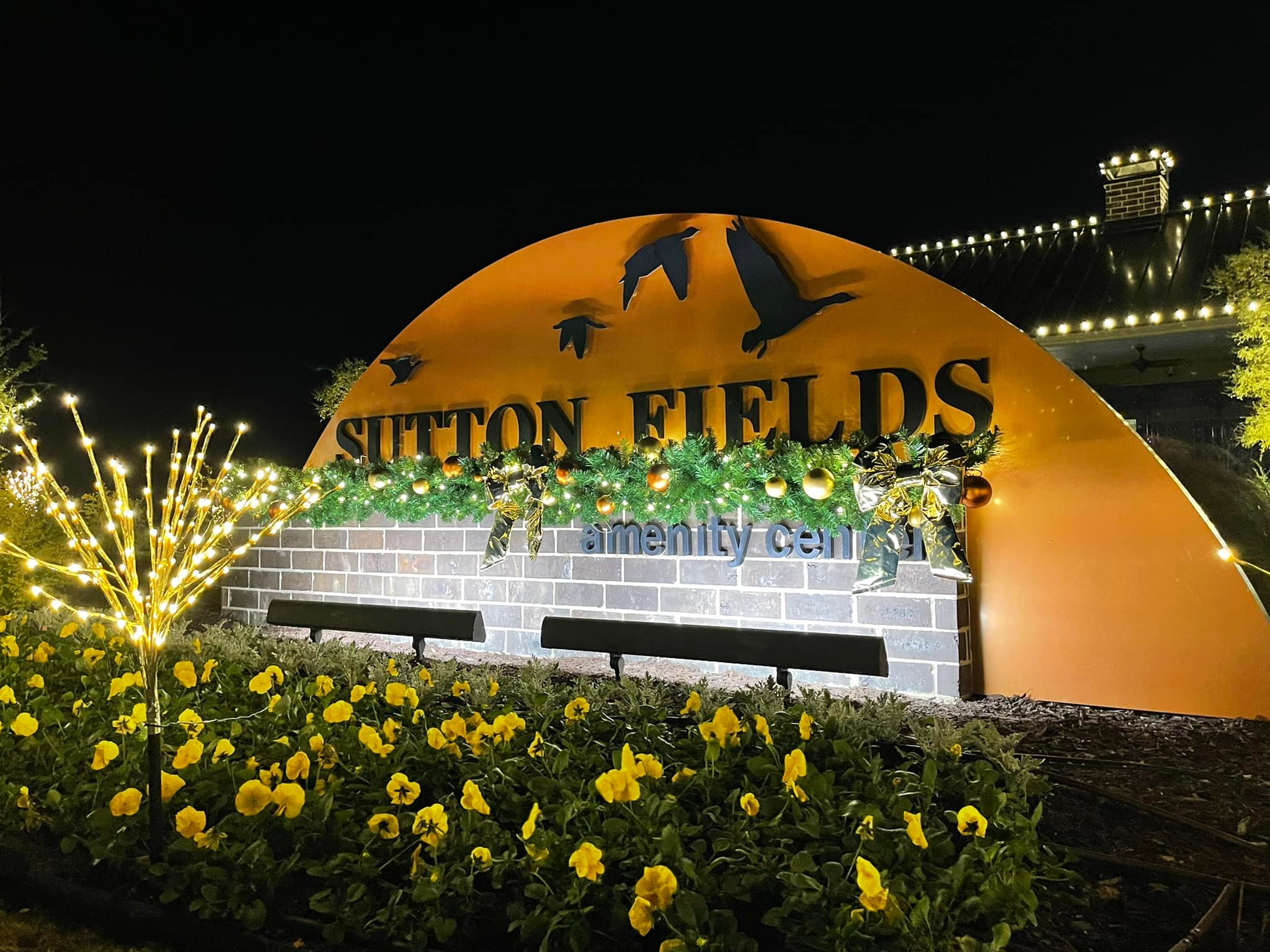
Scaling Your Commercial Operations
Building a Team
As you grow, you'll need reliable team members who can maintain your quality standards. Consider:
Hiring experienced installers during peak season
Training key employees for leadership roles
Creating standard operating procedures
Investing in safety training and equipment
Developing a company culture focused on excellence
Don't let fear of employees starting competing businesses prevent you from building a team. Focus on creating an environment where talented people want to stay and grow with your company.
Diversifying Your Commercial Portfolio
Avoid dependence on a single large client. Instead:
Target different market segments (retail, office, municipal)
Vary contract sizes and complexity
Build relationships with multiple property managers
Maintain a mix of commercial and high-end residential work
Plan for 10% annual client turnover
This diversification protects your business from the loss of any single contract while providing opportunities to upgrade to more profitable accounts.
Long-Term Success Strategies
Continuous Improvement
The commercial Christmas lighting industry evolves constantly. Stay competitive by:
Attending industry training and networking events
Learning from other successful installers
Investing in new technology and techniques
Refining your processes each season
Seeking feedback from clients and employees
Financial Management
Proper financial management becomes critical as you scale. Work with:
A qualified CPA familiar with seasonal businesses
Banking partners who understand your cash flow cycles
Insurance agents who can properly cover your risks
Legal counsel for contract review and protection
These professionals help you avoid costly mistakes and maximize profitability.
Building Your Reputation
In commercial work, reputation matters more than advertising. Focus on:
Delivering exceptional results on every project
Maintaining a professional portfolio and website
Collecting testimonials and case studies
Participating in industry associations
Building relationships throughout your market
Your reputation becomes your most valuable asset for securing new commercial contracts.
Transitioning from residential to commercial Christmas lighting installation requires dedication, professionalism, and strategic thinking. While the barriers to entry are higher than residential work, the rewards include larger contracts, predictable revenue, and the satisfaction of creating spectacular displays that thousands of people enjoy.
Success in commercial installation isn't about having the most equipment or the lowest prices—it's about understanding what commercial clients value and consistently delivering on those expectations. By focusing on professionalism, building strong relationships, and maintaining high standards, you can build a thriving commercial Christmas lighting business that provides year-round income and opportunities for growth.
The commercial market has room for installers who approach it professionally and strategically. Whether you're just starting to explore commercial opportunities or looking to expand your existing commercial operations, remember that success comes from treating this as a genuine business venture, not just a seasonal side hustle. Invest in the right insurance, systems, and relationships, and you'll find that commercial Christmas lighting can transform your business and your future.

What insurance coverage do I need for commercial Christmas lights installation?
Most commercial clients require general liability insurance between $1-3 million, commercial auto insurance, and workers' compensation coverage. Some larger clients may require excess liability policies. You'll need to provide a current Certificate of Insurance (COI) listing all coverage. Contact property management companies directly to understand their specific requirements, as they can vary significantly.
How long does it take to become an approved vendor for property management companies?
The vendor credentialing process typically takes 45 days or longer. This includes submitting your insurance documentation, W-9 form with EIN, business references, and completing their third-party verification process. Start this process well before the holiday season to ensure approval in time for bidding opportunities.
What's the difference between residential and commercial Christmas lights work?
Commercial work requires higher insurance limits, more extensive documentation, professional business systems, and different communication standards. While residential customers may accept informal quotes via text, commercial clients expect detailed proposals, contracts with clear terms, and professional invoicing. The scale is larger, but the profit per man hour is often better with multi-year contracts providing predictable revenue.
How do I calculate profit per man hour for commercial jobs?
Calculate profit per man hour by subtracting all costs (materials, labor including payroll taxes, equipment depreciation, vehicle expenses, and administrative overhead) from the job revenue, then divide by total man hours worked. A $5,000 job taking 4 hours may be more profitable than a $20,000 job requiring 80 hours of labor.
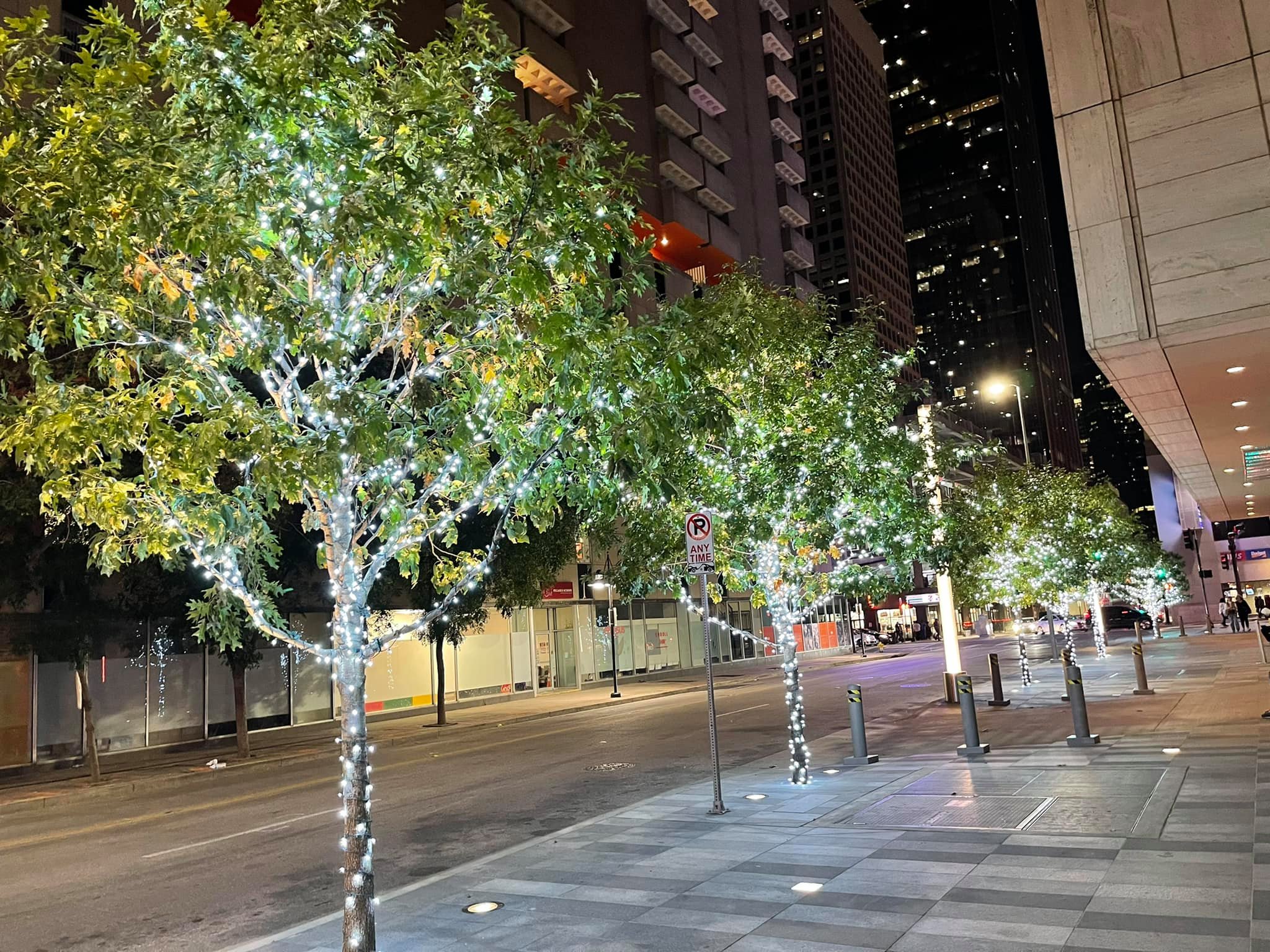
What equipment do I need for commercial installations?
Commercial installations require commercial-grade LED lighting, heavy-duty extension cords, specialized installation equipment like lifts and tall ladders, and storage solutions for off-season inventory. You may also need custom elements like tower trees. Plan equipment purchases strategically—unutilized assets drain profitability, but having the right tools enables you to bid on lucrative projects.
How do I find commercial Christmas lighting opportunities?
Start by researching local property management companies and calling to inquire about vendor requirements. Monitor city and county websites for RFPs (Request for Proposals). Build relationships by asking to become a trusted vendor and understanding their needs. Network with other contractors and join industry associations. Focus on building relationships rather than mass email campaigns.
Should I use a CRM system for commercial work?
Yes, a CRM system is essential for commercial work. It helps track multiple contracts, maintenance schedules, client communications, and financial data. Commercial clients expect professional operations, and a CRM demonstrates your ability to manage complex projects. It also provides historical data crucial for accurate bidding and helps ensure nothing falls through the cracks.
How much should I expect in annual client turnover?
Plan for approximately 10% annual client turnover in your commercial portfolio. This is normal and can actually benefit your business by allowing you to replace lower-margin contracts with more profitable ones. Diversify your client base to protect against the loss of any single large contract, and continuously prospect for new opportunities.
What's the biggest pricing mistake in commercial Christmas lighting?
The biggest mistake is underbidding to win contracts without fully understanding your true costs. This includes not accounting for maintenance calls, administrative time, equipment depreciation, and proper profit margins. Many installers focus only on material markup without considering profit per man hour, leading to busy but unprofitable operations that can't scale.
When should I transition from residential to commercial work?
Consider commercial work when you have established business systems, proper insurance, some equipment inventory, and experience managing installations. Many successful commercial installers start with one small commercial contract while maintaining residential work. You don't need to abandon residential entirely—high-end residential can be very profitable and provides good diversification alongside commercial contracts.
Copyright ©2025 All Right Reserved website designed by christmaslights.io
Terms of Service / Privacy Policy
Have questions or need assistance?
Contact us at (855)619-LITE



